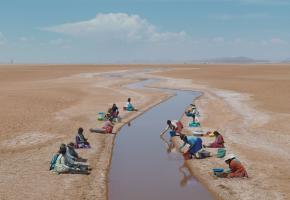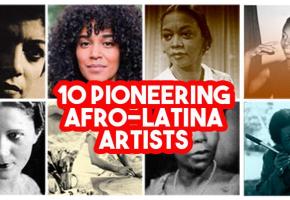The Peruvian Amazon is a gold mine in many senses. Economic reasoning considers it a vast territory from which to extract natural resources to satisfy urban population’s demands. Oil, gas, minerals, wood and crops are the gold nuggets desperately desired by the ‘invisible hand’ of the global market.
But the Amazonian rainforest is also rich in other ways: the many different indigenous populations that inhabit it, its biodiversity and the uniqueness of its landscapes, altogether make the Amazon a world’s piece of jewelry.
The documentary When Two Worlds Collide, directed by Heidi Brandenburg and Matthew Orzel and released in the UK this month, exhibits the struggle of indigenous populations in the Peruvian Amazon to preserve their means of living against the destruction of the rainforest. Particularly, the film revolves around the conflict that took place in 2009 in Peru when several native tribes from the Amazonian region blocked one of the country’s main routes as a sign of protest against the government.
According to International Labour Organisation and United Nations regulations, states should recognize native peoples’ rights over the lands they inhabit and preserve their well-being. However, Alan García, President of Peru from 2006 to 2011, disregarded such regulations through laws that allowed foreign companies to freely extract natural resources in the Amazon, which produced (and still produces) irreparable damage and health hazards for native communities, its fauna and flora.
The film follows the conflict of 2009, which rapidly escalated during the two months of protests that ended in the death of many indigenous demonstrators and several policemen. The figures of Alberto Pizango, President of AIDESEP (National Organization for Native Amazon Peoples) and Alan García incarnate the two logics at stake during the dispute: Pizango is the spokesman for native peoples, who have little institutional representation and whose only means of visibility is the social protest. He was closely followed by the filmmakers during the conflict and, later on, in his exile in Nicaragua after being accused by the government of being the intellectual perpetrator of the policemen’s deaths.
On the other hand, Alan García, only depicted through his appearances on TV (as he refused to be interviewed for the film) is presented as the spokesperson for economic interests. His speeches express the recurrent and never-accomplished promise of Latin America’s ‘modernization’, which has usually entailed the installation of foreign companies through Free Trade Treaties. ‘American entrepreneurs, bring your factories here. Come!’ says Garcia at the beginning of the film in a video extracted from a conference at the American Chamber of Commerce, ‘We won’t have any political conflicts’.
Although the film’s narrative is quite simple and conventional, with a very clear and delimited argument against the government’s decisions during the protests, it also poses (whether intentionally or not) the question about Latin American identity and how modern states and its legislations are designed to protect economic groups rather than the population’s well-being. In one of the TV extracts, Pizango confronts a journalist who accuses him of ‘putting the entire country at risk’ and leaving her without lights because of to the protest that took over PetroPeru pipelines. ‘But what about the rights of the indigenous people? - Pizango answers back- We’re also Peruvians. The rule of law protects the companies, but it never protects the territorial rights of indigenous people’.
With beautiful images of the rainforest, and through a romanticized version of nature and originary communities, When Two Worlds Collide serves the purpose of highlighting these unresolved struggles for natural resources and the difficulties native communities face in Peru when they defend their people’s rights. The situation is not much different in other countries in Latin America, a region where cultural and natural richness highly contrast with the violence and the inequalities that disadvantaged communities suffer every day, where worlds, and logics, collide on a daily basis.

















